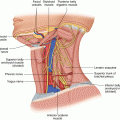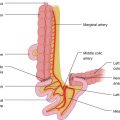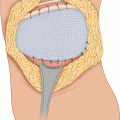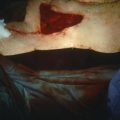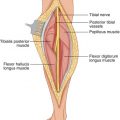(1)
State University of New York at Buffalo Kaleida Health, Buffalo, NY, USA
Shoulder disarticulation is performed for malignant tumors of the upper arm that are too extensive to be removed satisfactorily through a limb-preserving procedure but can be resected with clean surgical margins by following the boundaries of this operation. From a functional viewpoint, shoulder disarticulation is equivalent to forequarter (interscapulothoracic) amputation, the main advantage of the disarticulation being primarily a cosmetic one, as it preserves the shoulder point.
The incision for the shoulder disarticulation is a fish-mouth incision. The lateral flap is a fasciocutaneous one mobilized off the deltoid muscle (Fig. 16.1). The apex of this flap may reach as low as the insertion of the deltoid at the deltoid tuberosity of the humerus. This extent is advisable when the tumor is occupying the medial aspect of the arm, so that the lateral flap will be adequate for coverage of the glenoid and neurovascular bundle (Fig. 16.2). When the medial flap is available, then the length of the lateral flap can be shorter, as both the lateral and medial flaps can share the coverage of the glenoid and neurovascular bundle. The fact that the lateral and medial flaps either can share in providing coverage of the defect or one of them can do so independently affords flexibility to the surgeon in making the initial incision so that sufficient distance from the proximal extent of the tumor is maintained.
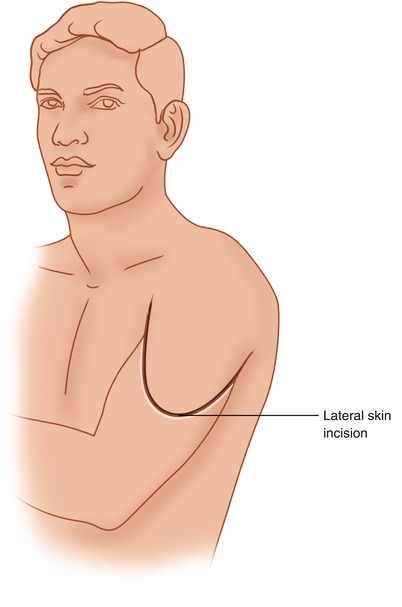
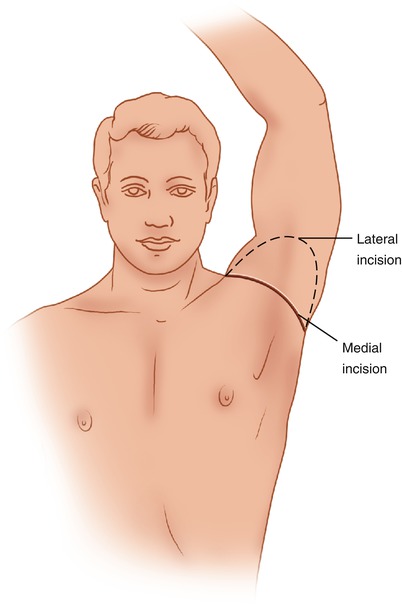

Fig. 16.1
The lateral (deltoid) flap is outlined

Fig. 16.2
The medial (shorter) flap is outlined
In descriptions of this procedure by some authors, the lateral flap is a myocutaneous flap that includes part or all of the deltoid muscle. When this operation is performed for the eradication of a malignant tumor of the proximal area, however, with the overriding consideration being the procurement of adequate margins, the surgeon is more likely to elect to develop a fasciocutaneous “deltoid” flap, so called because it is raised from a position in which it normally covers the deltoid muscle, although it does not contain any part of this muscle. The viability of this fasciocutaneous flap is excellent. This author’s experience with the “deltoid” flap in conjunction with shoulder disarticulation is limited, because patients with proximal tumors sufficiently high in the upper arm to suggest disarticulation as a therapeutic option often are treated with forequarter amputation instead, to attain a higher certainty of adequate proximal margins. We have used a fasciocutaneous “deltoid” flap with supply from vessels of the lower neck when the tumor is located medial to the humerus and involves the skin of the axilla. Circulation has been mostly excellent, except for a small area corresponding to the insertion of the deltoid muscle to the humerus; this area occasionally must be trimmed [1].
Stay updated, free articles. Join our Telegram channel

Full access? Get Clinical Tree



